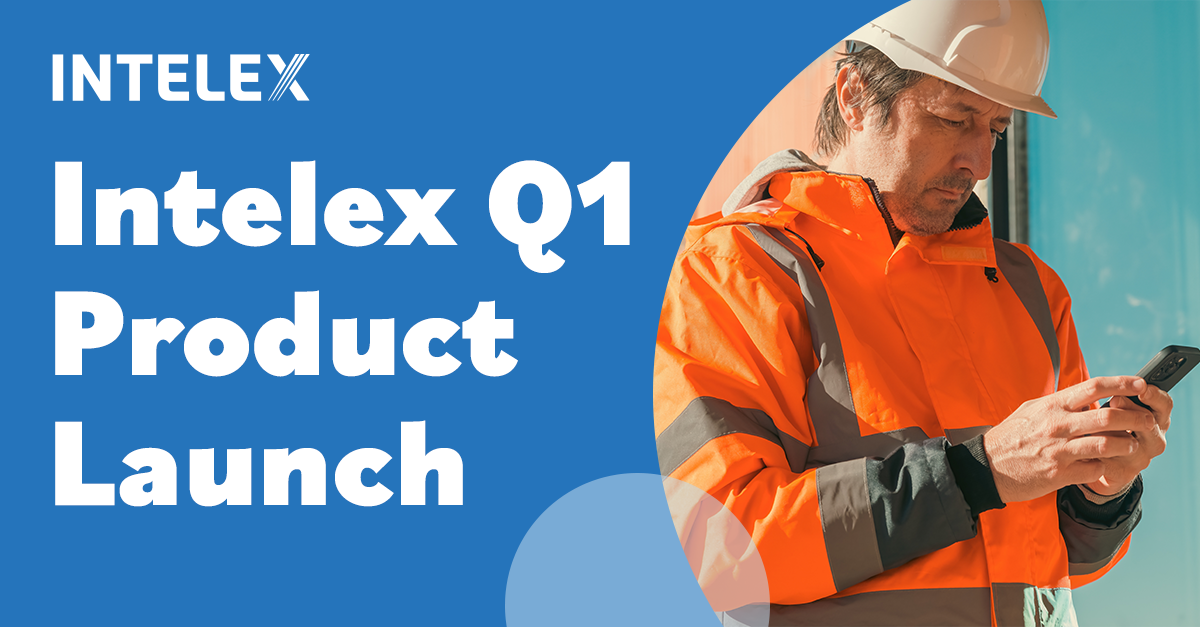How Mobile Apps Can Help EHS Leaders Build a Culture of Safety Within Their Organizations
August 9, 2024

Mobile devices are showing up in every corner of our daily lives. According to Pew Research Center, 97% of Americans own a cellphone and 90% of those people own a smartphone. But tablets, wearables, phones and other devices are no longer confined to personal use—they’ve also become indispensable tools in the workplace. Whether it’s communicating with coworkers, attending meetings, submitting timesheets or reviewing the latest project updates, employees increasingly turn to mobile devices to get work done.
For environmental, health and safety (EHS) professionals, the rise of mobile presents a welcome opportunity to apply technology to an age-old question: How can we get employees involved in the company’s safety culture?
Different organizations have their own definition of safety culture, but generally it means the company has identified safety as a core value and every employee is committed to ensuring that they and their colleagues are safe at work. This often includes an emphasis on quality, where actions are taken to uphold shared safety goals and workers are encouraged and enabled to make informed decisions about risks and risk mitigation.
At Intelex, we’re always exploring new ways to promote a positive culture of safety. To better understand how the growth of mobile can contribute to improving worker safety and strengthening workplace safety culture, we partnered with an independent research firm to survey EHS leaders on their firms’ use of and plans for mobile technology as part of their safety strategies. The findings from our leadership survey, “How Trends in EHS Mobile Technology Are Shaping Safety Culture,” reveal valuable opportunities for companies to drive engagement around safety as well as some challenges that need to be overcome to ensure successful adoption of mobile EHS technology.
Why a culture of safety is important
Sagging employee engagement is a serious concern in the workforce. Across all employee groups, recent research from Gallup found that only 32% of employees strongly agree that there’s a connection between their job and their company’s mission or purpose. This disconnect makes it difficult to engage workers in safety, increasing their vulnerability to errors and eroding employees’ willingness to participate in EHS activities.
There’s tremendous value in nurturing a safety culture. When workers care about their teammates as well as themselves, they’re more likely to avoid unsafe behaviors and to speak up if they spot problems. Case studies that showcase the benefits and results of exemplary safety programs abound, and the Occupational Safety and Health Administration (OSHA) provides success stories as well as tips and tools to help companies develop safety as a core workplace value.
How mobile apps can help you strengthen workplace safety culture
Respondents in our survey said their biggest barrier to improving safety culture is difficulty communicating safety learnings to frontline workers. This is likely due in part to the dynamic nature of work in many organizations. Some people travel frequently, others work remotely, many move between jobsites or visit multiple work locations. With limited opportunities for leaders and staff to come together, it’s increasingly difficult to develop a working relationship that includes robust, two-way communication channels. Mobile safety culture apps facilitate discussions and support critical feedback loops in these otherwise disconnected work environments.
44% of respondents ranked a lack of connectivity to frontline workers as either a first- or second-tier barrier to improving the safety culture among their employees.
The ability to share information through mobile technology means frontline workers can report incidents and observations without needing to track down a manager or EHS team member. It’s also a key tool for site managers to deliver information to staff about overall site performance and other safety topics. Providing a mobile-based feedback loop for safety learnings encourages more consistent safety engagement across the workforce and helps surface risks to ensure appropriate mitigation actions are taken more quickly.
Traditional paper processes and standalone systems have always had functional limitations, but employers have grown weary of those constraints and the friction of manual workflows. In a world where technology can apply significant horsepower to deliver comprehensive and accurate results faster, businesses can offload their more laborious tasks to mobile EHS apps, so workers are free to focus on higher-value activities. In our survey, incident reporting was the most widely deployed mobile module (54%), followed by audits and inspections at 30%. Mobile tools are proving popular for streamlining core EHS processes and helping frontline workers enhance their commitment to safety without increasing their workloads.
Our survey found that 54% of participants already use mobile- or tablet-based incident reporting across all their relevant sites and 70% use centralized digital tools, providing a solid launchpad for new mobile solutions. Safey culture apps give organizations more modern tools to prioritize safety, drive employee engagement at all levels of the operation and cultivate a culture where employees are—and want to be—active participants in safety processes.
Mobile adoption and safety culture app engagement challenges
The EHS mobile technology journey delivers a wide range of important benefits, but companies need to be ready to overcome the roadblocks along the way. Implementation of any technology requires a solid strategy to drive adoption, and mobile—despite its widespread use among today’s workforce—is no different.
Organizational Challenges
While most respondents have centralized digital tools embedded within their corporate workflows, our survey showed that 18% still rely on paper and spreadsheets. Before you roll a safety culture app out to your workforce, you need to get your organization’s overall technology posture in order. A successful mobile adoption plan must go beyond digitizing existing manual processes to include transforming them to work within the rest of the health and safety infrastructure. This represents a push toward a much broader technology strategy and companies, particularly those in the mid-market, may not feel they’re ready to support or fund the deployment of additional tools. Without a clear strategy to help direct your resources, your EHS mobile app implementation may not achieve the results you want.
Workforce Challenges
One primary issue, reported by 70% of respondents, is that overly complex solutions present significant adoption hurdles. Frontline workers may struggle to understand mobile interfaces that aren’t intuitive or don’t follow design best practices. If a new tool slows employees down or loads their plate with extra work, they’re likely to skip it.
Another top obstacle is a lack of company devices, with 82% saying it’s a significant factor. Workers may refuse to download work-related apps to their personal phones and tablets, which could stop your mobile technology rollout in its tracks. A corporate-level commitment to fund a mobile device program will help overcome the logistical challenges of EHS mobile adoption, plus offer a measure of control over updates, security and other software management activities.
Best practices to drive mobile adoption
Make it simple. According to 64% of survey participants, an easy user interface is the most influential factor in improving health and safety mobile app adoption. Workers want software that’s easy to use and has an intuitive user interface. When employees can quickly open an app and find or enter data, their initial resistance fades and they become more confident and willing to make it a consistent part of their workflow.
Make it configurable. Configurability was ranked as either the most or second-most influential element by 30% of respondents. Your business has unique needs, and tailoring a solution to fit those requirements helps align the user experience with your current work processes. Employees prefer platforms that feature familiar elements from their existing workflows, where they can leverage what they already know to make the transition easier. It also helps limit the training necessary for staff to adopt the new system.
Make it accessible. You want your mobile safety culture app to become workers’ go-to place for safety information. Data relating to emergency alerts was ranked as the most important type of safety material by 64% of survey participants. Permits and procedure materials were second at 40% and risk assessments came in third at 30%. Mobile tools that put impactful safety data and related materials at frontline workers’ fingertips help boost adoption and enable companies to communicate potential hazards in a way that allows for quick implementation of corrective measures.
Make it comprehensive. An overall plan is key to a successful health and safety mobile tool implementation. That means investing in corporate-owned devices and dedicating time and resources to change management activities such as app customization, upskilling users and the digitization of reference materials and resources. Then there are potential updates to the backend infrastructure to make the whole thing work. You also need buy-in across the organization so everyone commits to participating in safety procedures, collecting relevant data and refining their use of the new mobile tools.
It’s time to make a safety culture app part of your EHS strategy
As part of our commitment to improving worker safety, Intelex offers a mobile EHS app that is easy to use, intuitively designed and configurable to suit your business needs. We can help you establish and nurture efficient information flows that connect your frontline workers and safety teams so everyone can make more informed decisions. With the right steps in place and a plan to avoid the roadblocks that often derail mobile adoption efforts, you can take advantage of mobile’s pervasiveness across the workforce to strengthen your safety culture and nurture employee engagement.






